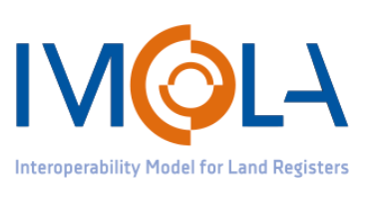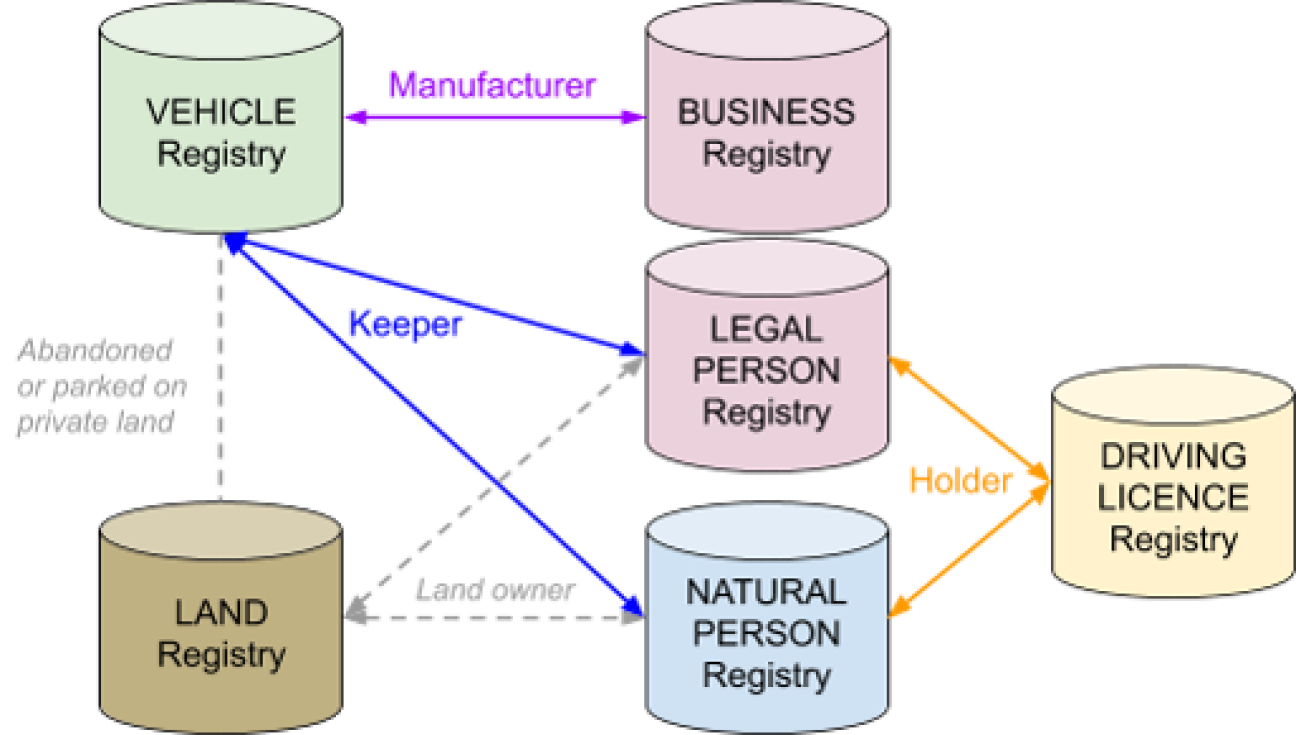The presentation is available here: ABR Webinar 20201116 - Presentation
The recording is accessible here: ABR Webinar 20201116 - Video recording
The European Commission’s Project Officer (PO) made an introduction to the ISA2 Action 2016.28 on Access to Base Registries, and presented the achieved and planned outcomes of the ABR phase 2020 with the main benefits for Member States (MS):
Published materials:
- The semantic specification BRegDCAT-AP which describes metadata of registry of registries (RoR), facilitates share and reuse of data and furthers the creation of a European Registry of Base Registries (ERBR);
- Reusable open source tools, which support, in practice, the implementation of the BRegDCAT-AP.
Materials planned to be published by the end of 2020:
- The Framework (BRAIF) which will support Member States (MS) with high-level information on how to deal with base registries;
- The Guidelines with elaboration based on some challenges that MS faced and how those could be overcome by providing good practice examples and recommendations.
The PO added that outputs provided under this Action are not mandatory and are freely available for reuse. Thus, the PO encouraged participants to check whether the outputs fit their needs, to reuse them, and share their feedback and experience with the team and other Member States.
The PO emphasised that one of the goals of the Action is to encourage Member States to exchange their challenges and best practices, including the sharing and reuse of solutions in the ABR Catalogue of Solutions, published case studies from interviews in the ABR Collection on Joinup, etc.
Presentations from EU Projects and Member States

IMOLA III – ELRA Project
ABR Webinar 20201116 - Presentation IMOLA III (ELRA)
View the presentation to discover the IMOLA III project’s approach to consolidate the semantic model for assuring Land Registry interconnection (LRI) and to develop a real and complete Land Registry Information semantic model, in order to obtain the interoperability of metadata related to the juridical information supplied by ELRD.
Highlights on Q&A:
- The key element learnt from the collaboration with other projects is to reuse the European building blocks vocabularies that allow following the same semantic standards;
- The organisations participating in this project from Member States are land registries;
- Regarding business registry core vocabularies, the recommendation is to reuse this building block to ensure that all data that is stored on national level is stored according to this common standard and description; BRIS is currently in the first stage and should be opened up in the future to other business / company information;
- Validation services for the ELRD are provided by the ISA2 Programme’s Interoperability Test Bed – more details are available here.

Italian Base Registries: the use of DCAT-AP(_IT) for their documentation
ABR Webinar 20201116 - Presentation AGID (Italy)
View the presentation to discover information from Agentia per l’Italia digitale (AGID) on their work on base registries, in particular the legal context and how the DCAT-AP_IT profile is used in order to document it.
Highlights on Q&A:
- AGID is also investigating the use of BRegDCAT-AP and support the future implementations of the Single Digital Gateway;
- One of the biggest challenges is the organisational one, in terms of engagement with the right roles of base registries that tend to act in isolation (e.g. respect the requirements of data quality set by legislation). Another important topic is semantics, namely, referring to standard data models (e.g. base registries have their own models, schemas).
BRegDCAT-AP
The ABR Team presented the context of elaboration for the semantic specification BRegDCAT-AP, which represents a vocabulary to describe metadata from Registry of Registries. Its current stable version, Release v2.00, is available for download in various serialisation. For instance, the RDF/Turtle format is useful for semantic experts while, on the other hand, a MS Word version could be consulted by non-semantic users as a human-readable version which contains usage notes and examples.
The current version represents a common effort by the Editor (W3C) and the ABR Working Group (MS and EU), documenting proposals and decisions taken by consensus in meetings and discussions held during the period of March 2019 – November 2020.
All interested parties can find more information in the ABR-BRegDCAT-AP Solution on Joinup.
The specification is already reused by SDG in TOOP Architecture in Data Services Directory, and is also implemented by Norway in DCAT-AP-NO.
The ABR Team has invited attendees to participate in next year’s ABR Working Groups that will involve discussions on the specification and allow them to share their proposals and feedback. Moreover, participants are welcome to ask for support if they decide to start their BRegDCAT-AP implementation.
Reusable Tools
The ABR Team introduced open source tools aimed to support any interested parties in their implementation of the BRegDCAT-AP: (BREG DCAT) Creator, Editor, Mapping Editor, Harvester and Validator.
The ABR Team presented an overview of the tools, technologies and relationships, main use cases and indicated how these can help users in implementing the specification.
Description of tools, covered use cases, deployment and adaptability recommendations are available in the ABR-BRegDCAT-AP Tools Solution on Joinup, and source code is available on GitHub. The chosen approach was to reuse ISA2 Programme’s good practices from other Actions:
- ISA2 Interoperability Testbed for BREG DCAT Validator;
- CPSV-AP for the other tools (except Harvester that was developed from scratch).
BRegDCAT-AP and Reusable tools – Pilot phase
The ABR Team collaborated with some Member States and collected use cases that would be interesting for Member States, and concluded the pilot phase by implementing a few proofs of concept, as mentioned below:
- Norwegian Digitalisation Agency (DIGDIR): BRegDCAT was used as the foundation for the implementation of their own flavour of a DCAT Application Profile: DCAT-AP-NO;
- Malta Information Technology Agency : BRegDCAT will be used to reduce interoperability barriers for identity validation processes.
For instance, the Norwegian Digitalisation Agency is responsible for the national application profile, namely DCAT-AP-NO, and the national data catalogue. DCAT-AP-NO is used as the basis for their national data catalogue, which contains not only open data, but also data with restricted access. It also contains an overview of the base registries, although there is no formal list of base registries. DIGDIR started to revise their application profile and considered that BRegDCAT-AP fits into their scope to be used as a standard and basis for DCAT-AP-NO, since it covers also non-open data, resolution of data quality issues, legal issues, etc. DCAT-AP-NO had to be extended to cover some national needs, and is fully compatible with BRegDCAT-AP.
The ABR Team presented an overview, a modelling of sources and results of the pilot’s implementation (see recording for more details).
Simulation of European Registry of Base Registries
The next step following the implementation of the pilot was to simulate a potential future ERBR implementation based on BRegDCAT-AP, and the ABR Team chose a use case from the transport domain, as showed in the figure below:

This would facilitate and ease interoperability barriers between Member States when they need to (example list):
Trace people responsible for a vehicle-related incident (e.g. abandoned);
Validate that a vehicle transaction is legal (e.g. not a stolen vehicle);
Find out if the manufacturer has recalled a part or accessory due to safety concerns.
What’s Next in 2020?
Publication of the Framework and Guidelines documents by end of December 2020.
Main Activities in 2021
Maintenance of BRegDCAT-AP and reusable tools: join the ABR Working Groups to share your proposals and participate in debates and decisions!
Support to Member States and EU projects on implementation of the specification and reusable open source tools.
Feasibility Study on European Registry of Base Registries:
- Analysis of existing registries of registries in Member States – Volunteers needed!
- Analysis of limitations (legal, organisational, etc.) and proposals on architecture.
Release of eLearning courses on ABR concepts, non-technical and semantic guidance – collaboration with IOP Academy…
...and continuous exchange of experiences on base registries and RoR creation!
Follow the overall project progress here: ABR Collection on Joinup
Should you have any questions, please feel free to share them with the ABR Team at ABR@trasysinternational.com.


